As the first installment of our new interview series – where we want to help new WordPress developers transform their project into a successful startup/company – here’s Thad Allender of Graph Paper Press.

As you may know already, Graph Paper Press is a notable theme and plugin development studio. Thad has been developing WordPress themes even before most of us knew what WordPress was.
What started as an attempt to create a unique WordPress theme for himself, became his full-time business, with over 280,000+ downloads and over a million in revenue.
In this interview, Thad shares his entrepreneurial journey, and shares invaluable insights for upcoming plugin developers.
Read on to find out what he had to say.
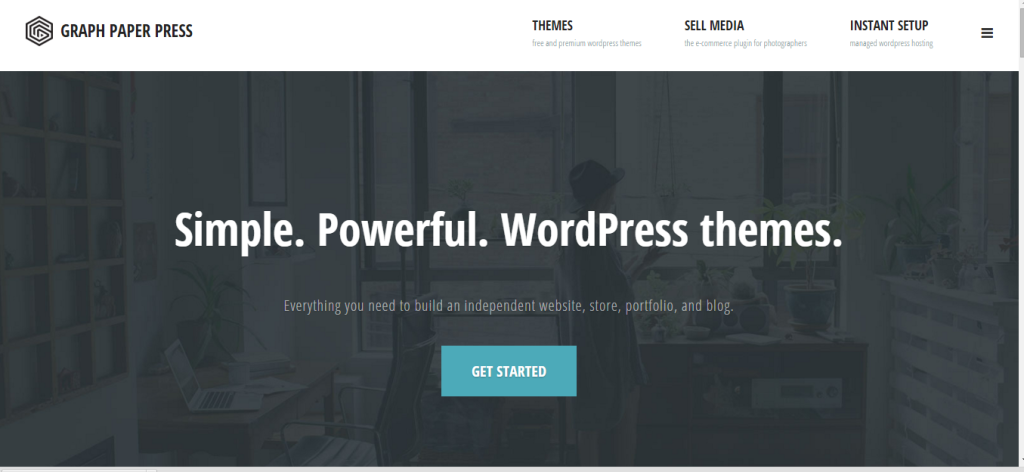
Basically I got started making websites in 2001, and just built sites for myself. In 2004, I started using MovableType which was a content management system and at the same time WordPress kind of got its start. I migrated from MovableType to WordPress because the MoveableType changed their business model and I was looking for a fully open-source solution.
At that time WordPress was more of a blogging platform. However, all the themes were tubular and not what I wanted for my website so I just started building themes on my own.
I released a theme on my personal site in 2007, and it got immediate traction – because it was a magazine-style theme and there weren’t any of those at the time. There were a few, but they didn’t cater to visuals – and my background was photography.
I was at the time the director of photography for a newspaper at Kansas, and was just taking a new job in DC to be a multimedia producer with USA Today.
I started building themes in the evenings – and sold one – to see how it worked out. It turned out to be a business, where I was earning more money from it than from doing my full time job.
We had a couple of partnerships, for a few years on the side. Then I hired staff, and decided to leave my full job to focus on this exclusively, and have been doing it ever since 2008.
I think what was helpful for me was that I had a niche that I was really passionate about. I was a photographer so I feel like I knew the industry pretty well – and there were serious problems with websites for photographers.
I thought, okay, let me build a website for my photography that really worked. For me it was never about WordPress, WordPress was only a means to an end. A means to build a website for my photography.
I think focusing on a niche first, is much more helpful than trying to focus on the entire WordPress market.
Know your customer. Define who your ideal customer is. Where do they hangout? What websites do they visit? What are the problems they’re facing with their business, or with their website?
Once you have that understanding of your niche, then you can create products for it. I think the challenge probably a lot of generalist WordPress designers or shops have, is that they have too broad a focus, so they’re competing with a massive market consisting of all WordPress theme / plugin developers. They’re not focused on one problem, for one group or one niche.
I think that was helpful for me in the beginning, to have that singular focus.
We are pretty small. It’s me, Chandra, Rick, Daniel who helps with marketing. I’ve also recently started working with another team. It’s just one guy. It’s 5 of us right now.
That’s the hardest part – trying to find the right people. We’ve hired people in the past, and had it not work out very well, so it’s one of the hardest things for running a business – hiring talented people.
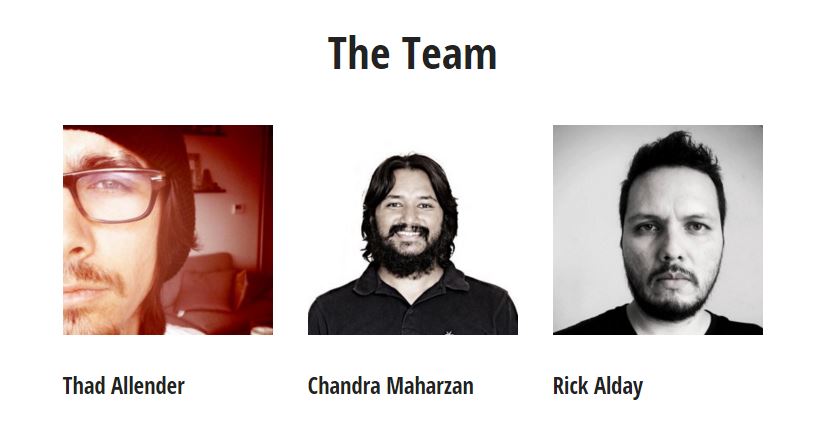
And to be quite honest, early on I got lucky. It was one of the guys, Chandra, who’s been with us for the longest from 2007 or 2008. He had big passion for WordPress and we worked well together.
It wasn’t so much with the team as much as it was with the individuals.
Working remotely presents challenges. You read all about “Oh, it’s a remote environment”. It’s true, but it also requires a great amount of trust that you over-communicate. Like the small conversations you have while they’re sitting right next to you, they are difficult to have when you are working remotely. So some of the remote stuff was difficult to overcome, especially the communication challenges, that’s pretty much it.
Just because that’s how the nature of business is organized. Basically if you’re looking to hire the best talent, you don’t care where they are at. You just want to find the best, most talented people. And for us, they’re sometimes in the US and sometimes they are not.
If you’re looking to hire the best talent, you don’t care where they are at.
If you are dealing with people outside the US, then you are dealing with contractors. So that’s kind of the nature of how the business has to work from tax standpoint, at least in the US.
You really can’t communicate enough. I feel like a lot of tools help that, things like Slack, and project management tools like Asana, Trello, have been very helpful to have a very rigid, clear scope for our work.
If you’re looking to have something built with contractors, clearly defining the scope of work is critical.
Pretty much the vast majority of the work is done in-house. We do very little contractual work.
We usually use contractors when we don’t have the time to do what we need to get done. I’d say 80% of the stuff is done in-house. Maybe even more than that. 20% is done by contractors.
That’s a good question. I contacted a couple websites that were reviewing themes. Reached out to them, shared a link with them – and it became very popular.
I kind off repeated that, because at that time, people weren’t posting about themes aside from Web Log Collection Tools. I don’t know if it’s still around or what, but that was where we kinda got our first start.
Honestly word-of-mouth is the best thing, that we’ve found. When a user shared with his colleagues and it works really well, you have a really high chance of converting that user into a customer.
There are paid marketing strategies like Facebook, re-targeting, AdRoll, email marketing – we use Mailchimp – there’s opt-in and opt-out, there’s Unbounce email marketing through your blog, there’s content marketing that we do on our blog, social media marketing.
We’ve also done partnerships. They have proved to be one of the most important means of marketing.
We’ve also done partnerships. They have proved to be one of the most important means of marketing, even though it’s not really marketing, because you are partnering. If you can find other websites to partner with that have users facing a problem that you are attempting to solve, then you might want to contact them and partner with them in some way. That way you know that their users are going to be your ideal customers.
Back in 2010 we partnered with a photography commerce provider called PhotoShelter. One of the most popular archiving and storage platforms on the web for professional photographers.
We had mutual friends, so we agreed to have all our themes integrate with their platform. Basically, their platform got access to all of our theme designs at that time. We added support for 10 themes.

And so we got a lot of customers that wanted our design, that were their customers, that then became our customers because they wanted to have that look and feel.
But that’s tough to find a partner. Sometimes there are technical resources in the interests, that are dedicated to a partnership like that. We’ve also done smaller partnerships – like where we’d sponsor the design of a website, and in return we’d get to be prominently featured in their marketing material.
I’ve been philosophically opposed to the concept of affiliate marketing, because I feel like it’s quite dishonest. And it also tends to attract people with sort of questionable intentions.
So for a long time we didn’t do that, and probably suffered quite a bit from that to be honest, because a lot of theme shops do that.
One of the most popular themes on the market, Avada – how they got a lot of their users was through affiliate marketing. I just yesterday deleted around 15 spam comments on our blog, of people embedding affiliate marketing links towards Avada.
It’s sketchy, and so it’s not good. I’ve been against it for a long time. So what we did was we built an in-house referral system – so that our existing customers could refer people to our service and essentially get a free account. Instead of going with people who are interested in a commission-based affiliate system, we chose to do something more in-house.
That really didn’t prove to be all that helpful, so we recently added an affiliate program to our site, but we’ve technically not implemented it yet. We’re curating the list of affiliates that we get, to see if it’s something we want to do. But we haven’t launched it yet.
We haven’t really moved. It’s not really something that I feel very good about.
If someone is incentivized to put a link on a site, then you have to question: are they recommending this out of experience, or are they recommending this because they’re getting a commission?
I feel like it’s disingenuous. But that said, it works. So I feel like you have to be cautious when you approach things like that, and that’s what we’re doing – being very cautious.
It’s becoming more and more challenging, essentially because if you just are interested in making money – and that’s it – then you have to go where the eyeballs are. And the eyeballs, unfortunately, are on market-place websites.
We chose years ago to not go that route, largely because we didn’t like the terms that Envato was forcing on its users. And at that time Envato did not have quality themes, but I think that’s changed quite a bit, definitely a lot over the last three years especially.
We just stuck to our guns and decided to not post our themes in market places. We do have some themes in Creative Market because we have contacts there, but we chose not to do go with Envato because we didn’t like their terms.
So yeah, just stuck with our guns.
It sounds really big. It’s not something that I say to boast. We have free themes that people sign up for, and in exchange, they give us their email addresses. It’s not something that we’ve purchased or anything like that, we’ve organically grown our user base since 2007.
Over 50% of our themes are free, and most of our plugins are free as well. It’s just the nature of our business strategy. I think about 10% are paid users.
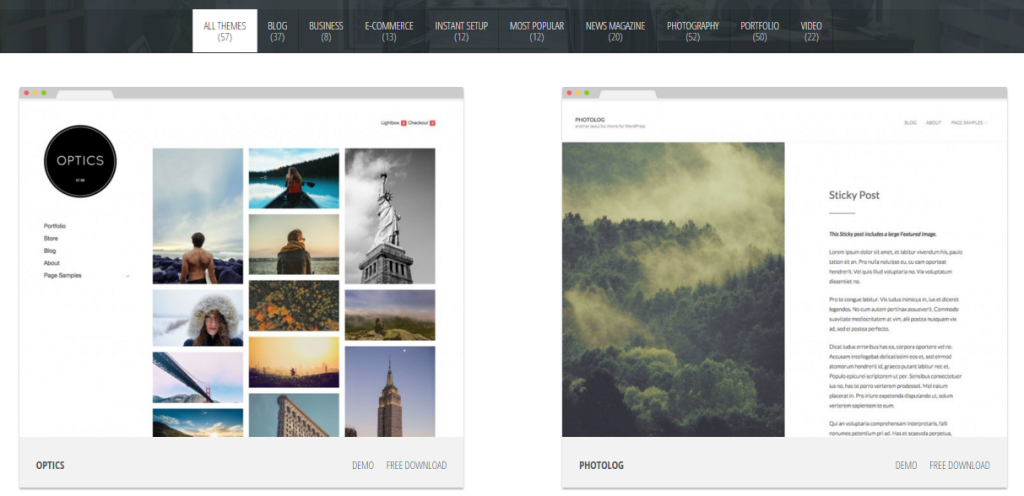
We have an email automation series that is like a lead-nurturing series.
When a user signs up for a free product, we reward them with a free product, and then we send them a series of five emails that are automated through MailChimp. We essentially just shower them with free stuff, tutorials and training materials. Towards the end we give them a discount code, and ask them they want one of our paid products.
I haven’t done a lot of analytics in it to know what sort of conversion rates we see from that. But I do know that it helps engage our users, because some of our emails are highly conversational.
Confirming, asking, you know, “Hey, how’s it going? Do you have any questions about using this, or problems, or anything? Just shoot me an email.” So people reply back and we help them through our support system.
We have a process that we use, it’s shared on Trello with everybody.
The first question that we ask is, “Is the design idea unique?” If other people have already created something similar it likely isn’t. So then we have to refine the theme idea.
In the next step you ask, “Does your idea include data to backup why your assumption about the project will succeed?”. A lot of people just create products based off of assumptions,
Oh, I think that this would work. I think that people want this but we’d like to be a little bit more analytical.
We use data to decide what people are interested in. So we collect customer feedback, and it helps steer us in a direction so that we can use data to decide what to build next.
Yeah, it’s a constant evolution. Our users see a theme they like, it doesn’t do ‘X’, or they want ‘X’ to be different. So then we talk about it, and look at it for our existing product line. If it is a fit for our products, then we’ll move on to the previous step which is where we ask, “Okay does somebody already have something like this? What is the market differentiation here? How is ours different?”
It helps with the marketing process down the road – to be able to use adjectives and words that shape the product.
And if we decide ours is different, and that it’s worth building because users have expressed in it – then we build it.
The last thing that we have in this three step process is asking ourselves, “Is the idea specific?”
Sometimes ideas aren’t as specific as they need to be. If they’re not, we try to add adjectives to help describe them better. It helps with the marketing process down the road – to be able to use adjectives and words that shape the product.
This week, when we launched a new theme called Optics, our content marketing guy, Daniel, was having trouble trying to understand how to frame this.
So me and Daniel started throwing out words that described it visually, as well as functionally. Like “clean”, or “minimalist”, it’s “e-commerce” – these descriptive words help to paint points that can be elaborated on in your marketing material.
They become the key features that you want to focus on in your marketing. And they also help shape the direction for the product when you’re building it.
We have three product buckets, one of which is handled by a partner – a hosting service, an all-in-one instant setup, WordPress theme/plugin platform.
The two things that we handle in-house are theme development, and plugin development.
We built a plugin called Sell Media that integrates with most of our themes, and allows photographers and other creatives to sell their work directly from WordPress. It allows them to sell photographs, to sell prints, and so to essentially be able to create any kind of photography store that they’d like. So that kind of has its own roadmap.

I oversee the assignments, and the code for that project. I also oversee the theme development, although Chandra has recently stepped up and is going to be having more of an active leadership role, making sure that the whole process and the theme development, and workflow is handled as quickly as possible.
We use Asana to do task management, we use Trello for public roadmaps so that people can vote on things, we use GitHub for public repositories. We use Bitbucket for our private code repositories.
That’s interesting because we’re going to cut our theme list by more than half. We are going to retire over 50% of our themes, and just focus on new themes.
We already have done that and told users that this theme is retired. You can still download it, but it doesn’t come with support. Primarily because a theme that looked good 5 years ago isn’t a theme you wanna use today.
Web design changes really quickly just like fashion.
So newer themes go through an exhaustive Q&A process. We are also a premium theme provider for WordPress.com, so that we have a pretty good understanding of how exhaustive our theme release and Q&A process has to be, in order to ensure we’re as close as possible to a perfect theme with zero bugs.
When you rush something to market you end up having much more support requests, so it’s best you get it right out of the gate.
Oh yeah there’s lots.
It’s just to treat people like you want to be treated.
It’s just to treat people like you want to be treated. Introduce yourself like you are speaking to people – if they are reaching out to you – as if they are frustrated. They typically are. So you have to go into the conversation knowing that.
Addressing them by name helps to humanize the whole experience. To let them know they are not dealing with somebody in their underwear in their basement working on something. They’re dealing with a professional who’s there to help you.
Just addressing people by name, something as simple as that helps the process, and helps temper any frustration. And actually saying, “I understand you are frustrated, I wanna help you.”, can be helpful as well.
Ultimately I think people want to know that you’re on their side. You just need to try to convey that.
Another tip: you need to be quick, you need to be responsive. You need to answer things as quickly as possible. You need to be thorough. You need to provide screenshots. You need to provide tutorials, video tutorials.
No, we don’t do 24/7 support. Our support team really just works 8 hours a day. When we receive an email, and it’s outside of our support time, that user will get an email that says, “You’ve emailed us, the office is closed, we’ll respond as soon as we get in tomorrow.” Just so that they know where they’re at in the process.
When we launched originally, we had a subscription model, which was $49 every three months or $99 a year. We then changed because we changed the platforms, and everybody was selling single themes and single plugins, so we wanted to give that a try. We did that for I think a year and a half.
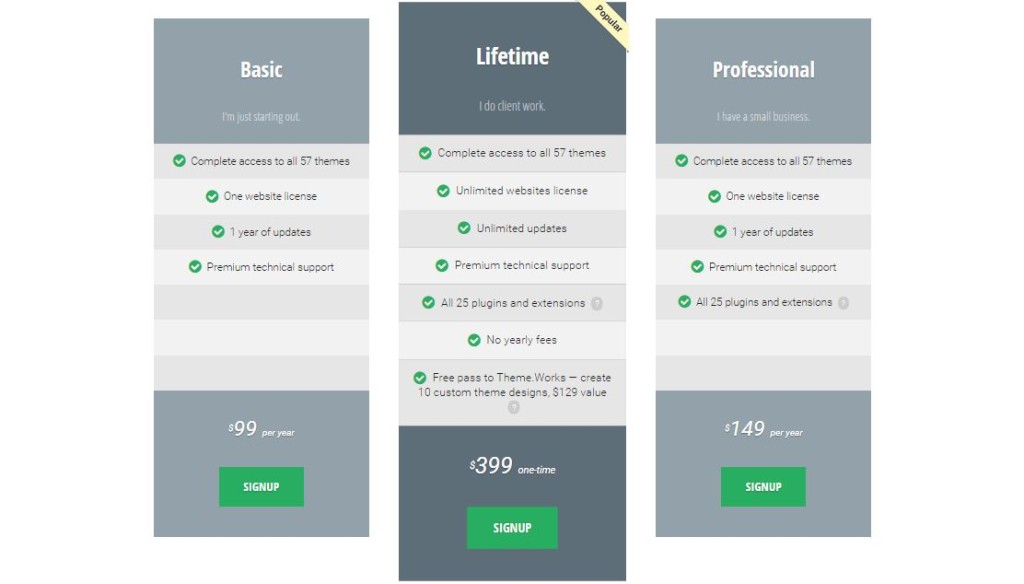
It didn’t feel like we were building a platform. It felt like we were building a store where people would come and buy a $10 thing.
We wanted it to feel more like a community, like an experience, like they were joining something that had great value.
So, instead of selling single products, we decided to go back to our roots and just sell memberships. You sign-up, and you get access to everything that we have made over the last 10 years.
Correct.
Yeah, we need to do that. It’s just manpower. We have a lot to do, and really not enough hands to do things sometimes. We would like to move a vast majority of our free themes to .org.
There’s lots of duplication in the process. You are managing something on Git, then you are managing it through SVN, then you’re managing the actual code deployment, you’re sometimes managing different features – so, there’s a lot of duplicate work that goes into managing something on a private installation as well as on the .org theme directory.
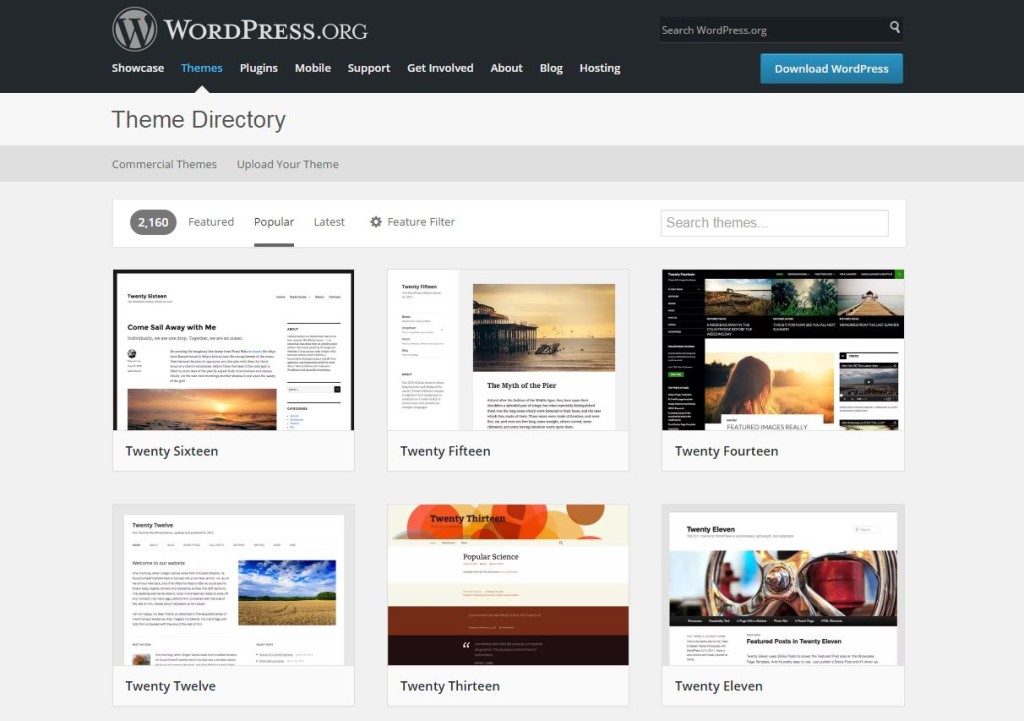
Then to throw in another monkey-wrench, we also manage things on WordPress.com. So sometimes, we are working on three different branches for one theme.
No, no, no. We have some themes there, and we have to update the list, and update them as well.
Once I heard they were having lots of lag time in their theme review process. It was taking 6 months or an year for things to get launched. I kind of decided to not put a lot of effort in there.
For us, it’s better to manage plugins that way. We have our own theme update process that can handle that, but we definitely want to put more energy on that front.
It’s kind of a mixed bag, sometimes is there’s a gap between what somebody thinks a plugin does, and what the plugin actually does. Then that creates confusion for the user. And sometimes users will leave not-so-good feedback.
Even Automattic, the plugins that they release have split 50-50 good reviews and bad reviews.
Developers typically leave good feedback. Common users sometimes don’t understand how something works, probably because there’s a disconnect between how they were expecting something to work, and how it actually worked.
I’m definitely not a fortune-teller (laughs). I think that’s ultimately what everybody is trying to figure out. And to be honest with you, I think a lot of consumers are going with SaaS-style solutions. Things like Squarespace, because they’re easier.
I think that even though WordPress might claim to have more market share, I think that there’s probably going to be a renaissance of things like static site generators. There’s always going to be a need for WordPress. I just think it might have gotten a bad reputation lately for security issues, complexity and also for a difficult user experience.
There’s always different places you can go to, to get all these different things that promise different things. From a user-experience standpoint, it’s kind of confusing.
So what needs to happen is – there needs to be communities that are developed around specific issues, like a WordPress theme company or a WordPress plugin company attempts to solve.
For instance, Yoast SEO, he built his business around the crowd that was interested in SEO. So if you could define your customer and define a problem, and try to solve that problem, then I think you can build a sustainable WordPress company that can grow organically over time.
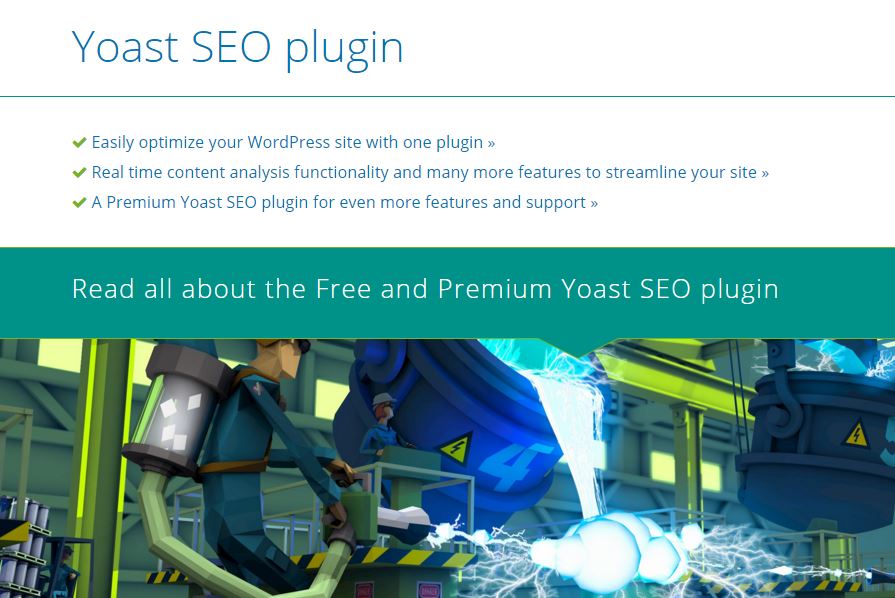
But I definitely see more market fragmentation. There’s tons of market saturation too in the WordPress space, so more fragmentation, more saturation, making it more difficult for users to understand where to go, to get what, and how to even find it. It’s a real challenge that WordPress faces.
Yeah, try to find big problems and try to solve those problems. If you find a problem, and you solve it, and you do it 10 times better than the next person who’s trying to solve it – then you’ve got a great idea.
Get weekly actionable tips, insights and case studies to maximize your results.